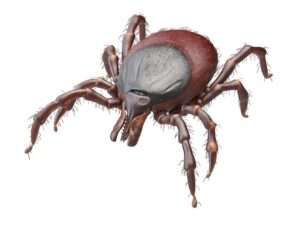
4 Steps to Protect Yourself from Ticks
Summertime means your kids are likely going to spend more time outside, but are they protected against the outside?
Insect bites are no fun, especially when they leave our skin feeling itchy. However, there is one critter you should really keep an eye on, more so when you venture into the woods. Without the proper precautions, children are susceptible to ticks–tiny, crawling, parasitic bugs that thrive in humid climates. Tick bites are not itchy, but they can cause dangerous diseases if not treated immediately, such as lyme disease. Don’t worry! There are several preventative measures you can take so you and your child can enjoy a worry-free summer.
- Make sure you apply repellent after your sunscreen if you know your child is going to be outside all day, especially in the woods. The repellent should have 20- to 30-percent concentrations. Most experts like Dr. Laura Boudreaux, a pediatrician at The Baton Rouge Clinic, recommends using DEET on your skin and permethrin on your clothing. Insect repellent does not need to be reapplied as often as sunscreen, but carry your repellent around with you in the event you do need to reapply, which is about every 8-14 hours. Spraying permethrin on their socks, shoes, and clothing will not only keep the ticks away; it will also kill them if they jump on the areas you sprayed. “Your products should be U.S. EPA registered,” says Dr. Boudreaux. “It’s very important to follow the instructions on the can of insect repellent. Avoid your face and eyes, and make sure to wipe off or bathe after application at the end of the day.”
- The way you dress can also be defense against ticks! Tuck your shirt into your long pants, and then, tuck your pants into your socks. As soon as you come back from your excursion, take off your clothes and throw them in a hot washer and dryer. Take a shower as soon as you can (within two hours of getting home) and check for ticks on your body, especially in the areas at the back of your knees, your groin, and your armpits.
- If you find a tick, don’t panic. As long as you remove it within 36 hours, the tick will likely have not caused harm. To remove it, use fine-tipped tweezers to grab it as close to the skin’s surface as possible. Pull it up steadily–if you twist or jerk it, the tick’s mouth parts can break off and stay in your skin, which you will also have to remove. Once you get the tick out, clean the bite area thoroughly with rubbing alcohol or soap and water, and dispose of the tick by flushing it down the toilet, wrapping it tightly in tape, placing it in a sealed bag, or putting it in alcohol (do not crush the tick with your fingers!). If your child develops a fever or rash within a few weeks of removing the tick, see his or her pediatrician.
- Another important step is to make your home tick-proof. You need to make your surroundings unappealing to ticks and any animals that carry them, especially mice and deer. That includes making sure your grass is no longer than three inches tall, trimming your shrubs, and clearing out brush piles. Tick tubes–small containers of cotton soaked with permethrin–are a handy tool you can spread around the perimeter of your yard.





